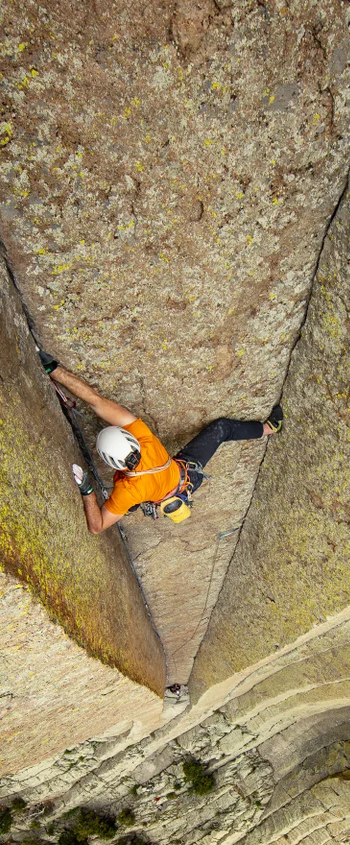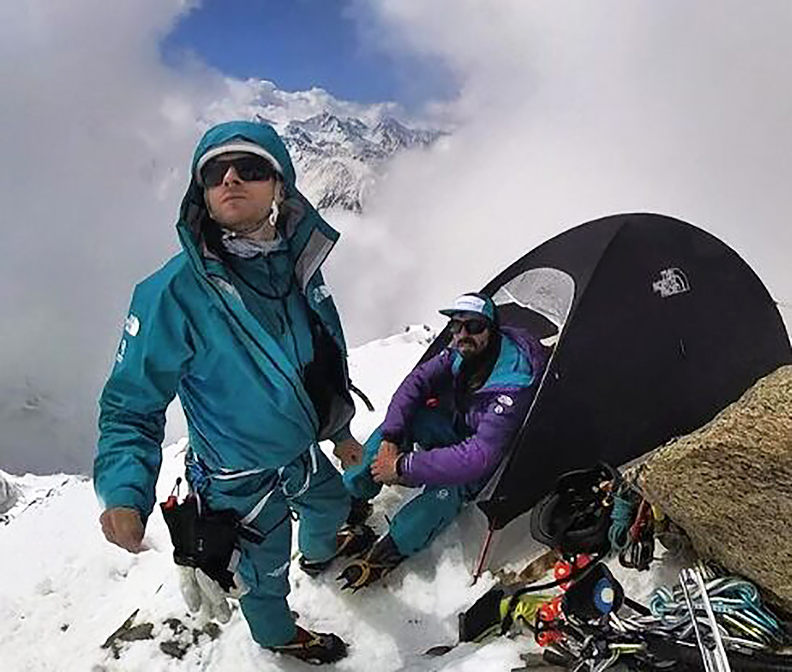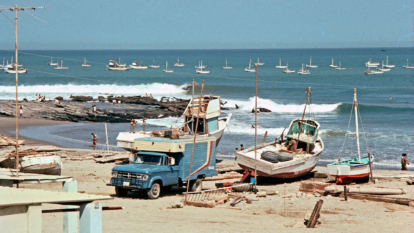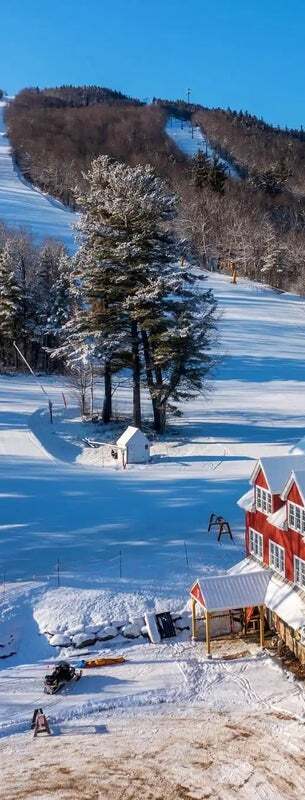The Quest to Save 100 Waves in Peru
A friendship built between waves becomes a powerful alliance for the protection of surf breaks.
Carolina Butrich loves to read and hates mangoes. She uses Microsoft Excel for everything, including designing her house. She gives abundant affection but is claustrophobic and can’t handle hugs. Above all, Carolina is a flame that does not go out.
Although we went to the same school in Lima, Peru, we never met there. The first time I saw her was in the waters of the Cañete River in 2010. She showed up with her long hair dancing in the wind and tan smile lines, the kind that indicate a life spent near the sea. I was suffering to keep my kayak upright while she paddled for two hours straight with ease. We didn’t talk, and I didn’t ask her name. Years later we realized that was the first of many sessions together as our friendship built around protecting surf breaks and nature in our homeland bloomed—a task for which I could not have asked for a more ideal partner.
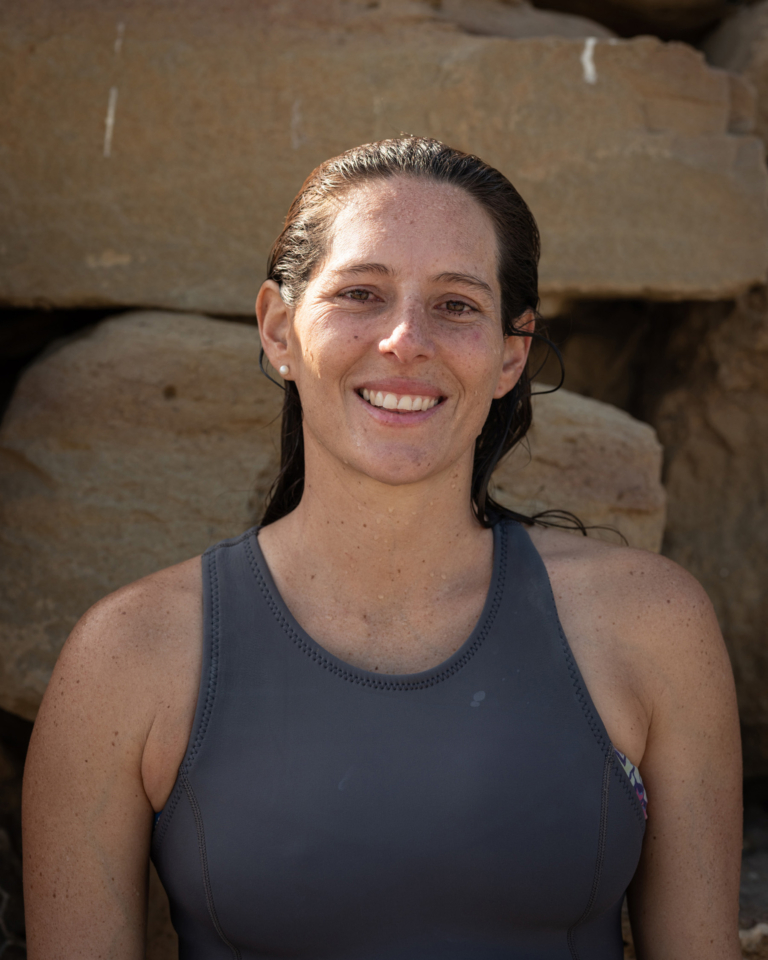
Peru is generally known for Machu Picchu, mysterious Nazca lines and its flavorful ceviches. What most don’t know is that the first law to create a legal system of protecting waves was born here. In the ’80s, the mayor of the Chorrillos district started the process to build a road that many say changed the ocean’s landscape dynamics and destroyed the now mythical La Herradura . Years later, when a poorly planned pier almost destroyed the perfect wave of Cabo Blanco, the surfers organized themselves. They formed a conservation association and left no stone unturned until the Peruvian Congress approved the Ley de Rompientes (Law of the Breakers) in 2000. It took 13 years for it to go into effect and became the legacy of a new generation of Peruvian surfers committed to saving waves. In 2016, Chicama, famous for being the world’s longest wave, was the first to be protected. Today, there are 43 protected waves in Peru thanks to thousands of people who’ve joined the Hazla por tu Ola campaign, an effort that fueled the surf community with purpose and welded my ironclad friendship with Carolina.
After we first met at the Cañete, I started a project called Conservamos por Naturaleza, an initiative of the Peruvian Society of Environmental Law that invites and facilitates anyone’s involvement in nature conservation. We promote a voluntary conservation movement because we believe that conservation must be ingrained in the culture of everyday society. Today, we have over 250 initiatives supported by families, communities and organizations that protect almost 500,000 acres of natural ecosystems in Peru.
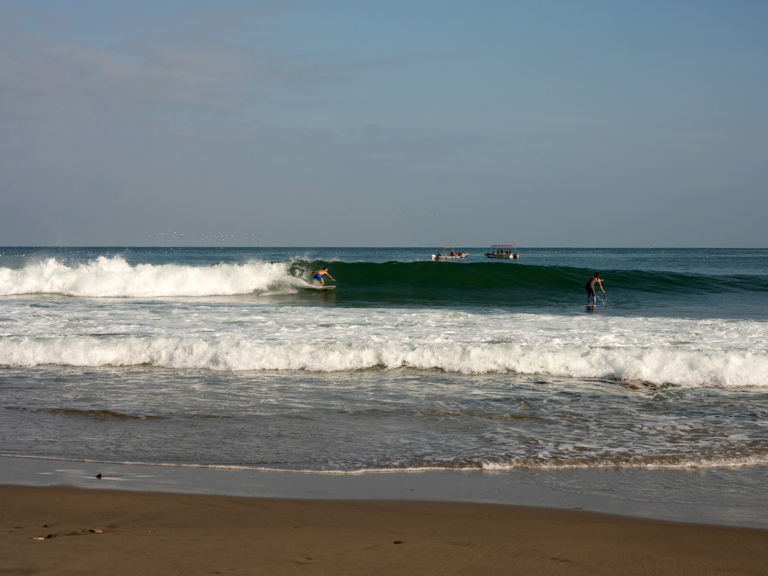
While I dedicated myself to Conservamos por Naturaleza, Carolina traveled the world, with water being the sole constant in her life. She competed in windsurfing racing until she saw a video of legendary windsurfer André Paskowski riding waves at Ho‘okipa in Maui. She decided that within a year she would be riding those same waves. So, she started taking the bus nearly 400 miles (640 kilometers) north from Lima to Pacasmayo every weekend to learn how to ride waves while pursuing a degree in environmental engineering.
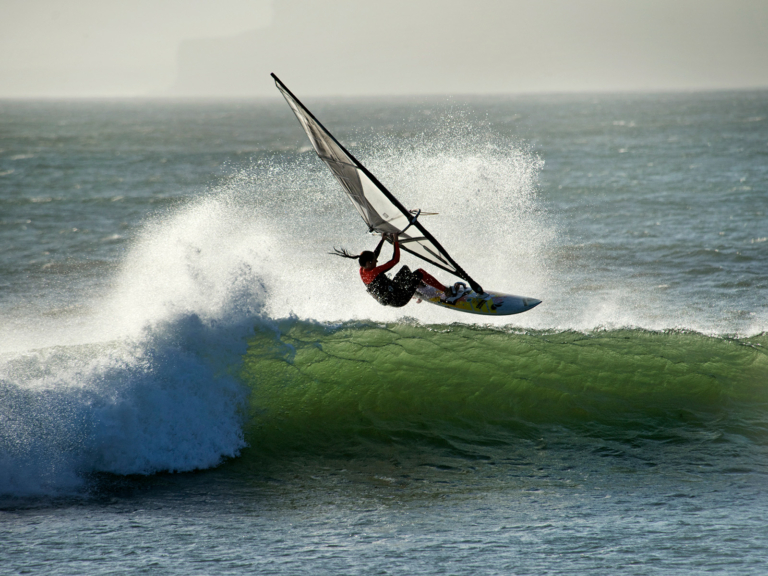
Soon, windsurfing Ho‘okipa became a reality, and just two years later she was competing against the best in the Professional Windsurfers Association world tour. Maui in Hawai‘i, Paracas and Pacasmayo in Peru, and Jericoacoara in Brazil became usual stops. At each location, Carolina found an extended family. Before finishing her degree, she got offered her dream job in Jericoacoara as the head windsurfing instructor at ClubVentos. Carolina didn’t want to miss the opportunity, though she did sign a contract with her mother, who helped her finance her studies, promising that she would return six months later to finish college.
That decision would alter the path of her life because in Brazil she met André Paskowski and they fell in love. André had a terminal illness, and they would only get a year together. But they were determined to make memories. Between therapies, they traveled to film the windsurfing documentary Below the Surface, which focuses on former Professional Windsurfers Association World Champion Victor Fernandez and his friends. André passed before finishing the documentary, but Carolina completed it. The process helped her get on her feet again. They had the goal of presenting it at a film festival in Sylt, Germany, and she knew that’s what André would have wanted. “We had everything to be happy together: love, trust, fun, common interests, respect, admiration, everything … except time,” Carolina wrote in a farewell letter.
We saw each other in 2013 at an environmental event, and I told her about Conservamos por Naturaleza. When she came back to Peru two years later, she visited our office and said that she had returned to, “give something back to the sea for everything it has given me.”
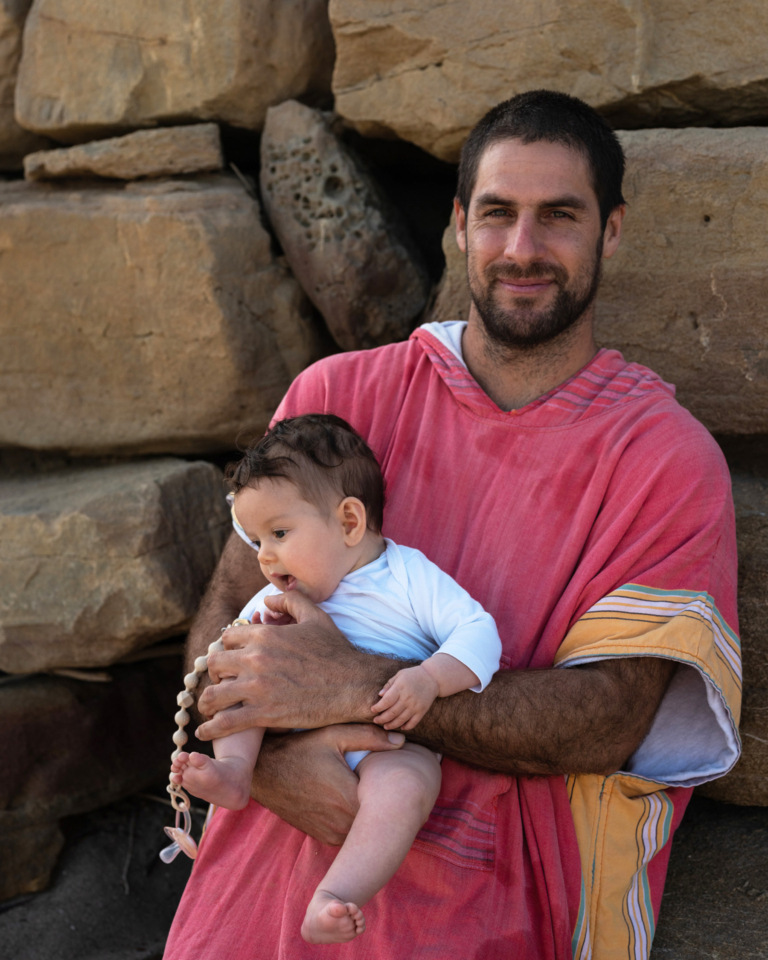
I told her that our organization was created precisely for people who wanted to generate a positive impact, and that her timing was spot-on since we were about to launch a campaign that would allow us to protect the waves of Peru. When I mentioned that we had no budget and needed to raise over $500,000 in the next 10 years while uniting a very dispersed Peruvian surfing community to protect 100 waves, Carolina asked, “When do we start?”
A few weeks later, we found ourselves in front of a crowded room to launch Hazla por tu Ola. Carolina, terrified of speaking in public, stuttered due to nerves but against all odds—and encouraged by a couple of pisco shots—explained that if we wanted to protect our waves, we had to be organized as a community and not rely on the government. Today, Carolina handles herself with ease when she gets on stage. A key part of our organization is to inspire citizens and private companies to take action for nature conservation. Her dedication and leadership toward this goal earned her the Carlos Ponce del Prado Award in 2019, and the Latin America Green Award for Hazla por tu Ola in 2020.
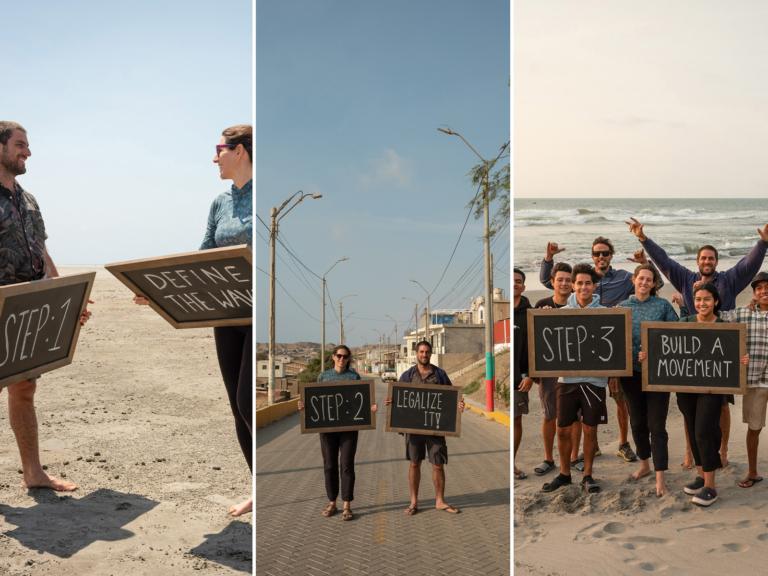
There are a few different approaches when it comes to protecting surf breaks. In countries with strong institutions and more mature ocean governance structures, surf-break protection usually falls under marine spatial planning regimes. These processes allow governmental agencies to navigate the different interests over a particular marine area and set the rules for its use. For instance, countries such as New Zealand and Australia have coastal management plans, where recreational uses are prioritized in wave zones and activities that may affect those zones are limited. In Australia, there’s even a surf management plan for the Gold Coast and millions of Aussie dollars are invested for its implementation.
But in many other countries, marine spatial planning is nonexistent and the communities that are committed to protecting marine ecosystems are in constant dispute with other stakeholders to make conservation a public priority. This is the case in Peru, where, for example, the Navy receives several requests to grant permits for the construction of ports, pipelines, piers, coastal defense structures and more.
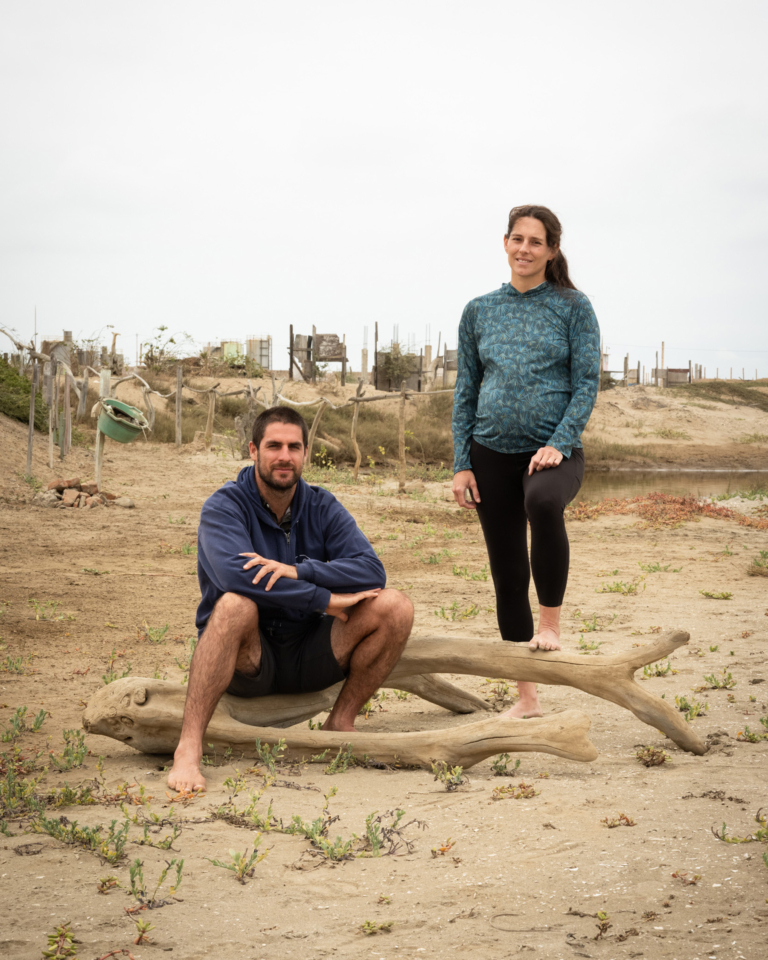
The Law for the Protection of Surf Breaks created a formal process for citizens to put conservation before other potential uses. The way it works is if you can prove there’s a wave in a potential area of protection, you must submit a technical file and a map of the area to the Peruvian Navy. These documents need to show the existence of a wave and its physical features through a seabed analysis and a swell record. The Peruvian Navy then validates the information, and once the wave is registered in the National Registry of Surf Breaks, the government can no longer grant rights for activities that may affect the waves—meaning no new breakwaters, docks, piers, underwater pipelines and more. Basically, all construction that could affect the window and path of a wave are avoided.
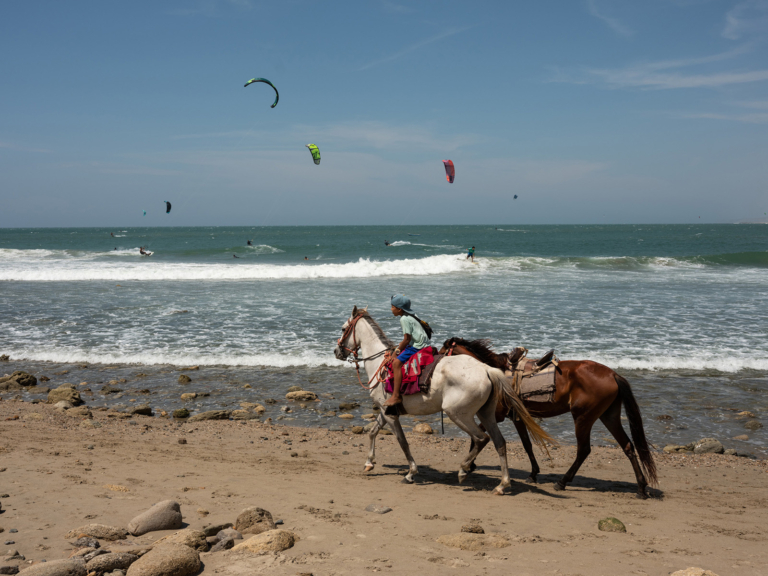
Led by Carolina, Hazla por tu Ola identifies and works with community leaders to raise the funds needed to hire specialists. The specialists then prepare the files and follow up with the authorities so that the waves are registered and stay protected. It costs $3,000 to $6,000 USD to get the research done and submitted to the Navy for every single wave. To date, citizens in Peru have raised 90 percent of all funds needed for wave protection.
In 2018, we were invited to the Global Wave Conference organized by Save the Waves Coalition (SWC) in Santa Cruz, California. SWC played a key role supporting the local Peruvian community in the process to protect the iconic wave at Huanchaco, famous for its traditional caballitos de totora, an individual fishing boat woven out of reeds and used by the locals to fish for the past 3,000 years. The relationship with SWC has grown throughout the years and has been key in amplifying Hazla por tu Ola’s model in other countries, connecting us with activists across the world. Our most recent collaboration with them consists of an online platform with a systematization and comparison of legal tools and approaches for the protection of surf breaks, including case studies from 12 countries. We hope this information will help local leaders and politicians to commit to protect surf breaks all over the globe.
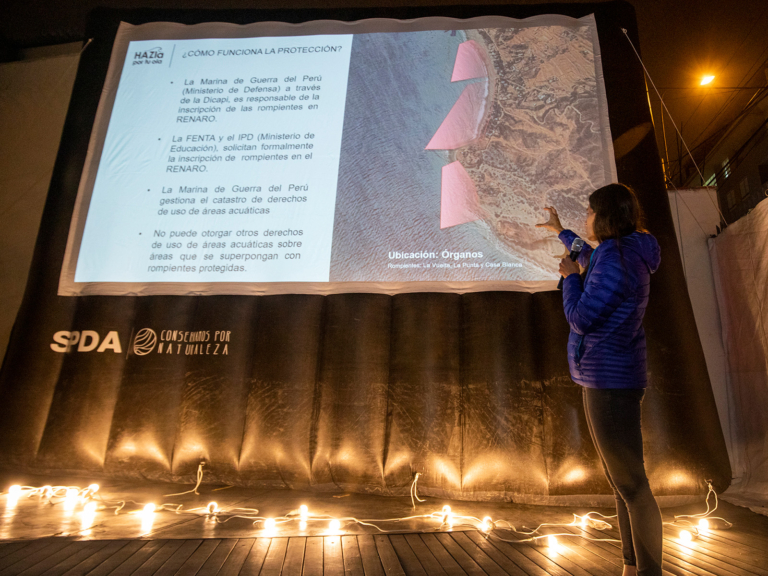
With momentum on our side, we’re determined to save as many waves as we can. “We have set the goal of having 100 waves protected by 2030,” said Carolina. “We are not going to stop until we have all the waves in Peru protected by law and there are more countries that apply this model.”
And it’s working. The Peruvian model is being adopted in Latin America. Caro has been working with grassroots activists in Ecuador who created a new collective called Mareas Vivas, which is ready to start a campaign to collect citizen signatures and present a law proposal to the Parliament for surf breaks protection. South of the border, in Chile, after a speech I gave about Hazla por tu Ola in 2016, Luis Felipe Rodríguez Besa—now also a close friend—got inspired and co-founded Fundación Rompientes along with the talented filmmaker Rodrigo Farias Moreno and lawyer Juan Esteban Buttazzoni. Fundación Rompientes has played a key role aligning the efforts of several groups for the protection of surf breaks in Chile, and we have been a natural ally since day one.
Recently, the Chilean Congress approved a bill promoted by Fundación Rompientes that seeks to protect Chilean surf breaks. The project is now to be evaluated by the Senate. Also, in Mexico, the community of Puerto Escondido has organized and set up a holistic plan for the sustainable development of their coastal area that includes fostering the creation of a local Ley de Rompientes. Both Save the Waves Coalition and Hazla por tu Ola are providing guidance in the process. When facing environmental challenges, it is easy to feel overwhelmed, so knowing that you can exchange ideas and relate to fellow activists doing the same in other countries is invaluable.
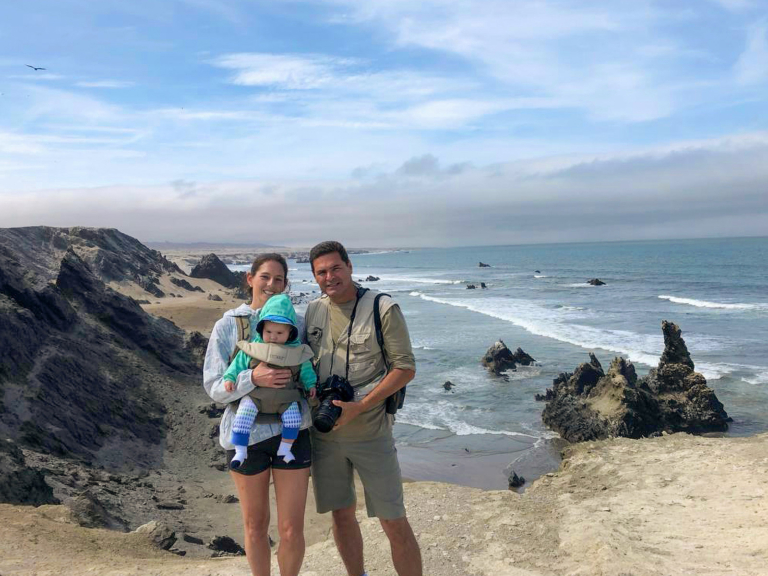
When Carolina returned to Peru in 2015, she thought it would be just for a few months. Lima had been a place from which she always found herself escaping. Eight years later, she’s still here because she has found balance. She has a job with purpose, is at the forefront of Hazla por tu Ola’s goal of protecting surf breaks and is surrounded by people who inspire her. She’s also allowed herself to fall in love again and is starting a family. Although she doesn’t try to, Carolina teaches us that living your life without taking anything for granted and setting down some roots—without necessarily anchoring yourself to one place—is key to achieving important changes because, as waves have shown us, there is no barrier that can resist what is done with love and perseverance.
By Bruno Monteferri
For more information and details : https://www.patagonia.com/stories/the-quest-to-save-100-waves-in-peru/story-146583.html
FIRST-TIME BUNGEE JUMPING – WHAT IT’S REALLY LIKE (KAT’S STORY)
We love adventures.
We have done rock climbing, zip-lining, diving, swimming in a cage with sharks, white water rafting, skydiving and extreme roller coasters.
You name it, and either we have done it, or it is on our bucket list.
Bungee jumping had been on our list for a long time.
But in the end, it proved much harder than it seemed in photos and videos.
Bungee jumping took our adventures to another level, and we learnt a few life lessons.
While we were on our last road trip in New Zealand, we knew this was the best place to try it.
New Zealand is the birthplace of bungee jumping, which has been popularised here.
The country is also renowned for innovation, excellent facilities, many years of experience and, most importantly, an excellent safety record.
Queenstown is called the ‘Adventure Capital of the World’, so we felt that we should do our first jump there.
This post has been written from Kat’s point of view because this has been a rather personal and intense experience.
Petr’s self-preservation instinct is quite relaxed compared with most people, so his experience made for another story. You can read it here.
BUNGY OR BUNGEE?
Both words have the same meaning.
Bungy is the spelling used mainly in New Zealand, while bungee is more common in the rest of the world.
SKYJUMP LAS VEGAS
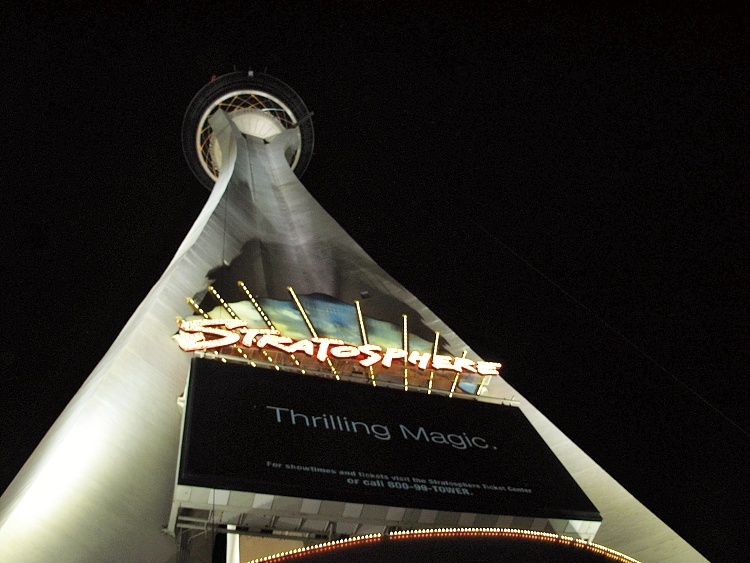
The list of adventures I have been through is long, and I’m proud of that.
There is only one exception, SkyJump Las Vegas, the world’s highest controlled descent.
The launching pad is located on the 108th floor of the Strat Hotel, Casino and SkyPod (formerly Stratosphere Casino, Hotel & Tower), 260 metres (855 feet) above the Las Vegas Strip.
While in Las Vegas, we decided to do the night jump. What could go wrong, right?
I was confident because we had just done our first skydiving in Cuba a few months before, and I loved it.
We had jumped out of an old aeroplane 3 km (1.9 miles) above the ground, so it couldn’t be worse, right?
I was wrong. It was.
I was fine until I got to the jumping platform, where everything changed.
When I started to feel the wind on my face, I realised what height I was at.
I was supposed to jump into the dark but could not do it. My confidence was gone.
I chickened out.
What was so different between skydiving and this jump?
I was on my own. There was no experienced instructor I could hang on to.
I took the challenge too lightly.
On the other hand, Petr managed to jump. The fee we had paid was non-refundable, so he jumped twice not to waste the cost of my ticket. How cool is that?!
KAWARAU BRIDGE BUNGY, QUEENSTOWN
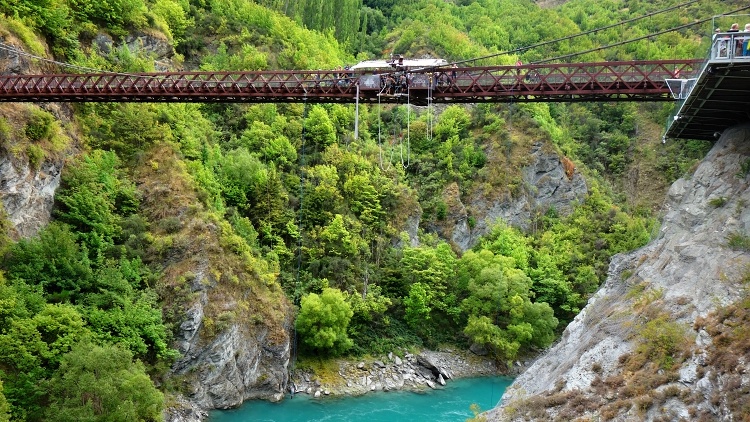
When we arrived at Queenstown in New Zealand, I knew that if I didn’t do it here, I would probably never do it.
But after I failed in Las Vegas, I was afraid I would give up again.
At first, we visited the Kawarau Bridge Bungy to see what it was like.
It’s the world’s first commercial bungee, with a height of 43 metres (141 feet).
The location was beautiful – a wooden bridge in the Kawarau gorge overlooking the river with its turquoise water.
But the scenery was the last thing on my mind!
People were queuing for the jump. There were many of them – men, women, young, middle-aged…
They all seemed to be just ‘normal’ people, no adrenaline junkies.
I thought that I could do it too if they could do it.
I had done so many potentially dangerous activities before and didn’t want to look like a coward now.
The faces of people who were just about to jump said it all.
They were afraid, really afraid.
I realised that everyone felt fear (except for those adrenaline junkies).
And that’s what it was all about – overcoming the fear and doing it despite it.
So, we decided to jump the following day.
Unfortunately, we mentioned this to the Airbnb host we stayed with that night.
Instead of a few words of encouragement that we needed, she said that bungee jumping was the worst experience of her life.
After standing on the jumping platform for ages, she only jumped (with closed eyes) because her friend threatened to push her.
It didn’t help at all. It wasn’t something I needed to hear.
As you can imagine, I didn’t get much sleep that night.
I went from “Yes, I can do it, I have done worse things.” to “What is the point of doing it if I won’t enjoy it? Let’s leave it till another time. ”
In the morning, I still didn’t know if I was going to do it or not.
We arrived at the Kawarau Bridge and watched people jumping for a while.
Petr asked if I was in so that he could buy the tickets.
I still didn’t know what to do. I hated to admit that I was so scared.
We agreed that Petr would jump first, and then I would decide if I wanted to do it or not then. He managed a beautiful dive; it looked so easy. He told me it wasn’t too bad and I should do it too.
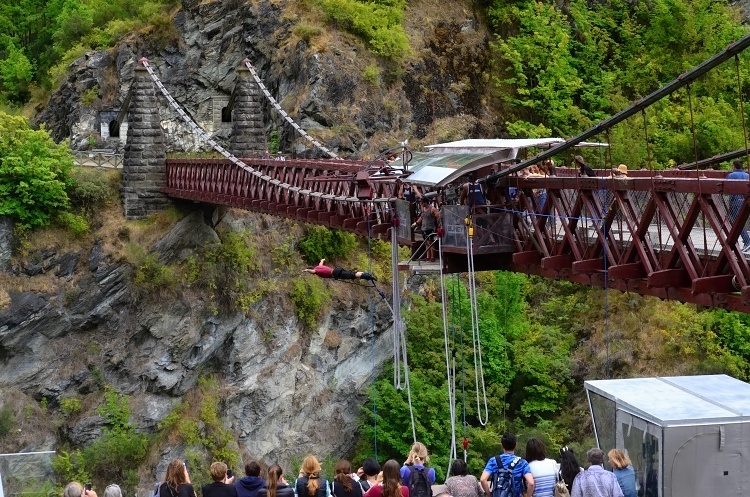
I still didn’t know what to do.
Then, we saw a couple preparing for a tandem jump (the girl was so scared that she didn’t do it in the end).
I thought it would be easier to jump together with Petr because I could hold him.
If anything went wrong, he would know what to do (he always does!).
I knew if I didn’t do it here and now, I would never do it because I would find another excuse.
A tandem jump was available, and we bought the tickets.
We got weighted, signed a waiver and put on our harnesses.
We were told which way to jump and hold each other for a smooth experience.
The preparations took longer because they had to calculate the correct length of the ropes for two people jumping together, which wasn’t that common.
Each of us was tied to a separate rope, and we held each other behind our backs.
Petr got ready first because he was taller.
Then, it was my turn.
The staff were excellent; they made fun and talked to us all the time to make us feel more relaxed.
I had a smile on my face, but when I got to the jumping platform, I felt paralysed by fear.
I could barely move.
But I didn’t question the safety of the ropes.
It was the feeling of having to jump into space from such a height.
I was trying not to look down and was looking at the surroundings.
I was forcing myself to think about something else, but it was hard.
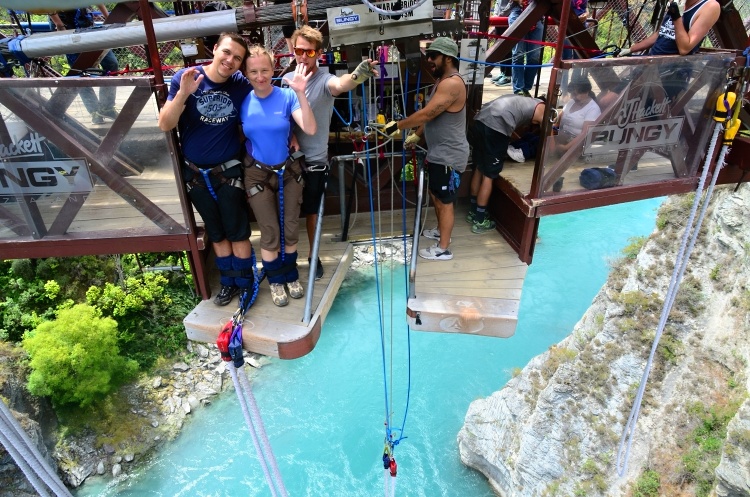
And there we were – standing on the jumping platform, tied to each other, smiling for the cameras but freaking out inside (at least I was!).
It felt like being in a movie – and then the guy said: “You are ready to go – three, two, one, JUMP!”
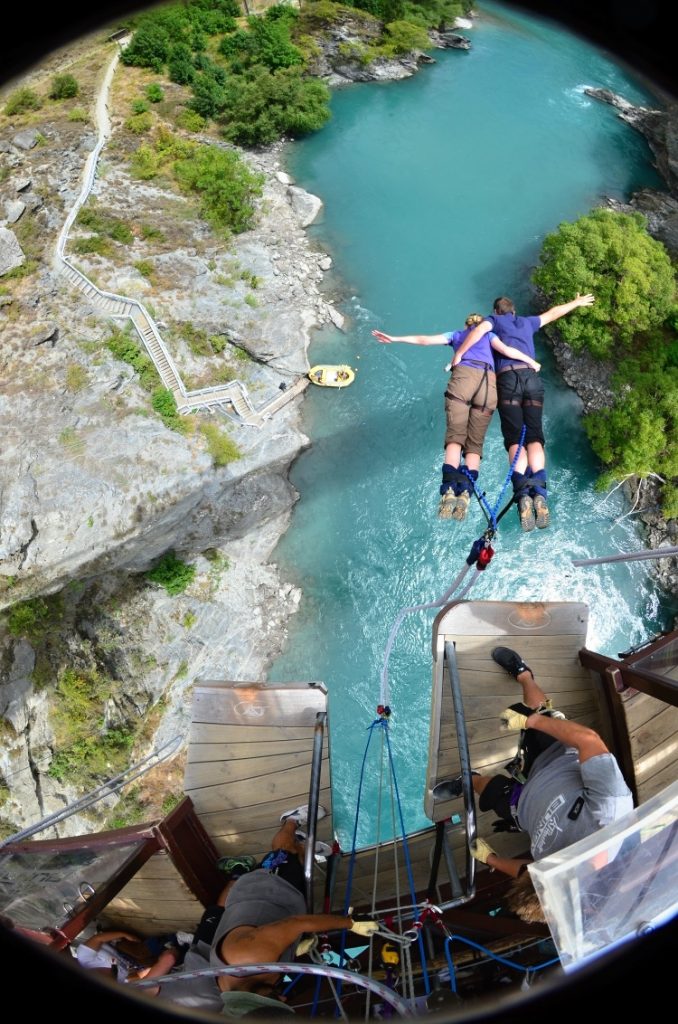
And we jumped.
I let go and DID IT.
I managed to jump at the exact second as Petr.
It was a special moment that we shared.
It was just a split second until gravity grabbed us, and we started falling.
Then I didn’t remember anything until we reached the water.
I don’t know if I passed out or if it just happened so quickly that my brain couldn’t process it.
But I was probably fully conscious because Petr told me later that I was screaming the ‘F’ word all the way down!
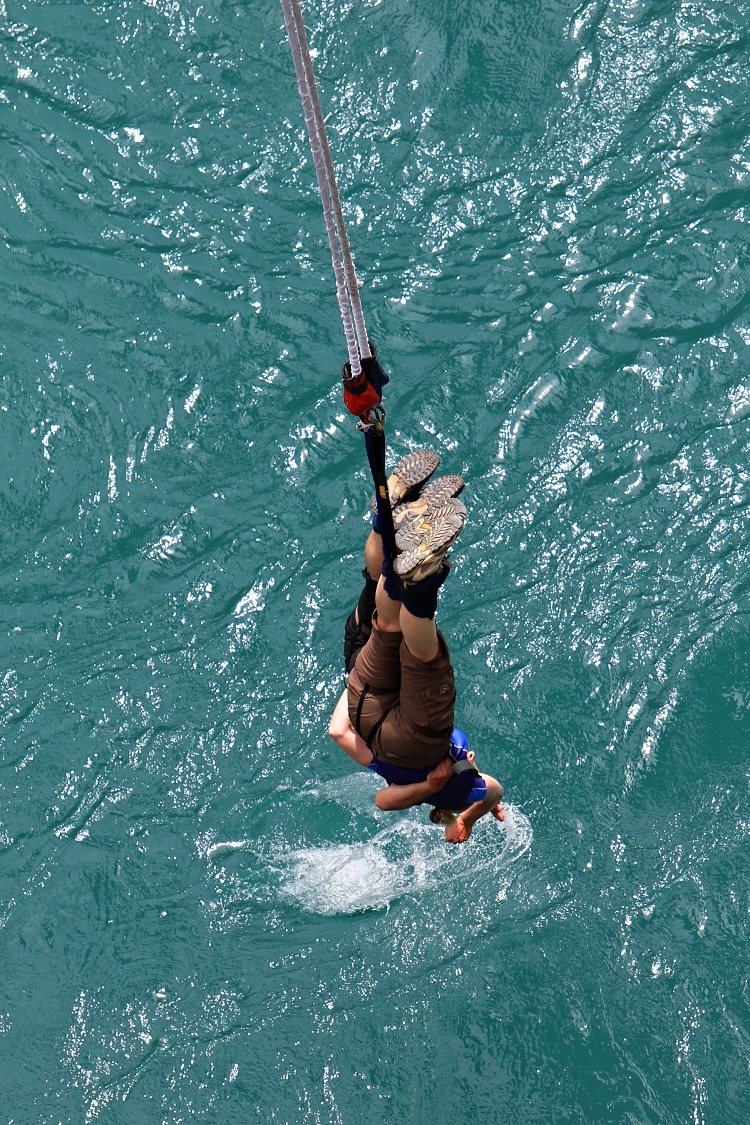
We were thrown up and down like two puppets when we got down to the river, and the ropes stretched.
The fear was gone, and we were laughing and enjoying the moment.
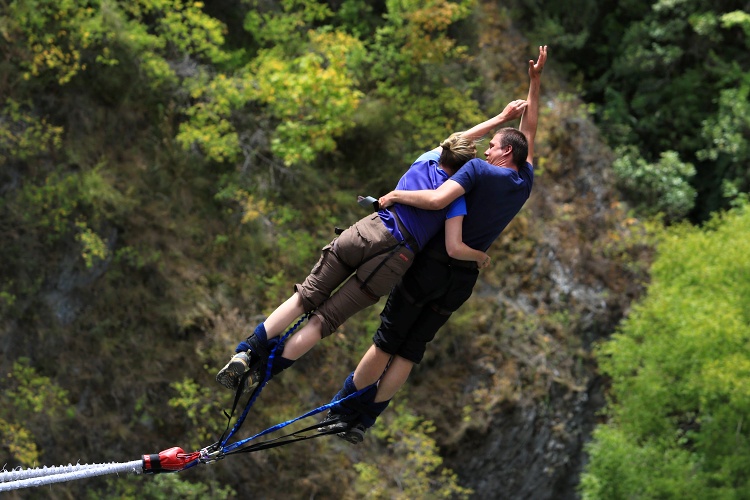
After we stopped moving, a boat came underneath us and picked us up.
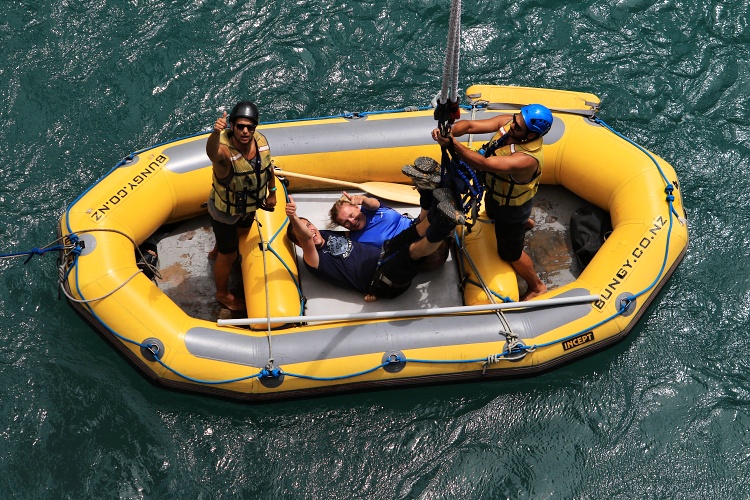
I was shaking but so happy that I had made it.
But deep inside, I knew I needed to do it alone.
I was a step closer to that now.
Petr hadn’t had enough and wanted to conquer the nearby Nevis Bungy too, because we were leaving Queenstown the following day.
It’s New Zealand’s highest bungee (134 metres, 440 feet). People jump from a cable car cabin hanging between two mountains.
I wasn’t ready to do that because I was still processing our tandem jump. Just standing in the unsteady cabin was scary.
Fair play to Petr that he managed to jump as effortlessly as only he can.
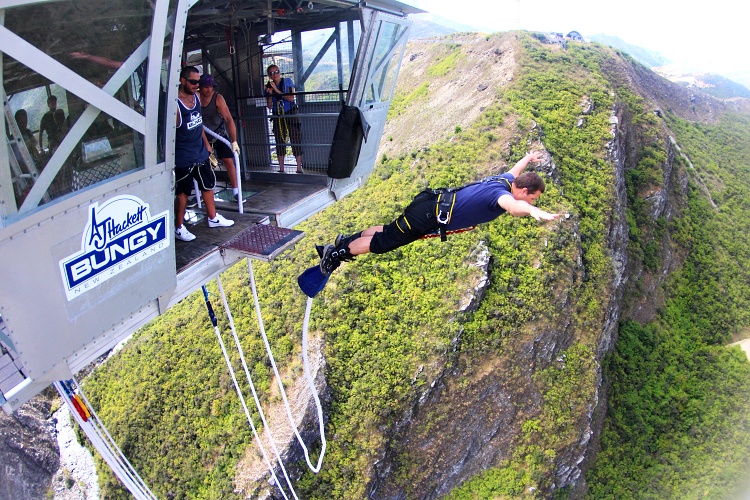
AUCKLAND BRIDGE BUNGY
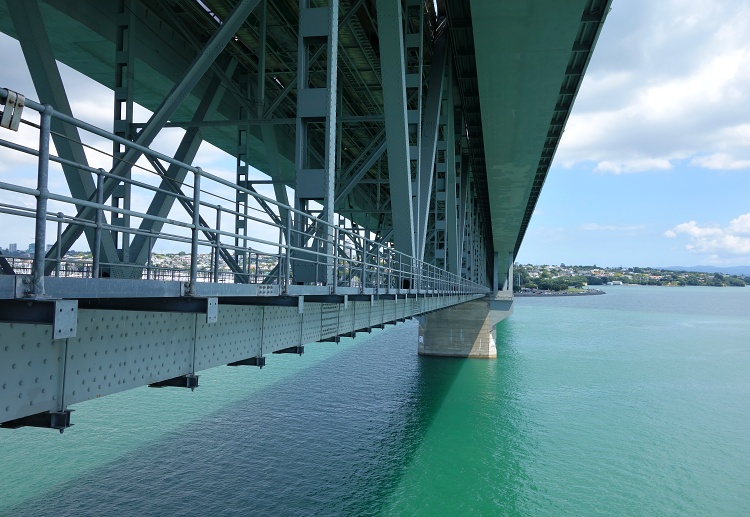
Two weeks later, we arrived in Auckland.
I knew it was my last chance to jump on my own because we were leaving New Zealand soon.
The Auckland Bridge Bungy was perfect because the jump was above the sea, so I convinced myself that nothing could happen.
If anything went wrong, I would end up in the water, right?
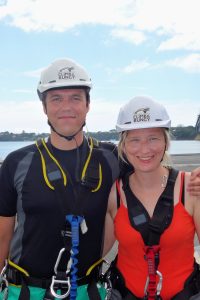
We booked our tickets online and got picked up by the minibus.
We put all the gear on, got a quick safety briefing and off we went.
We had to walk to the middle of the Auckland Bridge to get to the jump pod.
At the moment, the bridge is not accessible to pedestrians.
The only way to get stunning views of Auckland’s skyline is the Bridge Bungy or Walk.
The walk to the pod felt never-ending.
I was trying to distract myself by looking around and thinking about anything else but the jump.
Petr was the most experienced jumper in the group, so he went first.
He decided to jump backwards – how crazy is that?!
He requested the ropes to be adjusted to get as deep into the water as possible.
He dived up to his knees.
When he came back up, he was laughing as if it was all just a piece of cake.
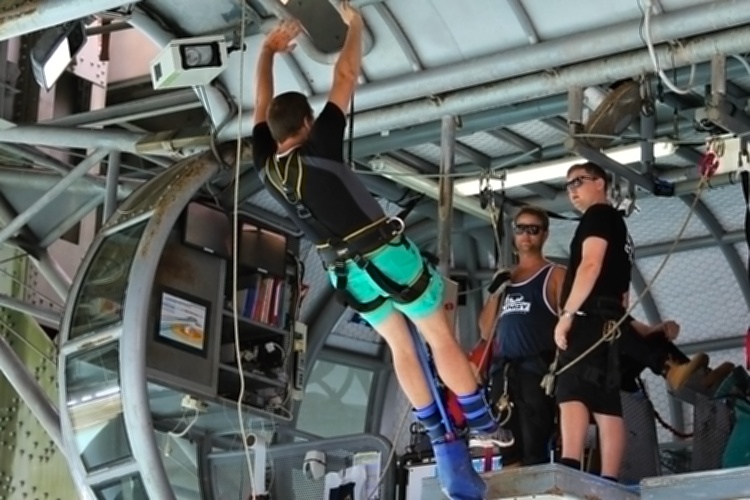
Two more people were jumping after him.
I could see that they were scared, but they made it.
Then, it was my turn.
Again, the staff were terrific.
They were making jokes, but nothing could help me at that stage.
I was trying to keep calm, but I was so frightened that I could barely move.
I felt like a robot, just doing whatever I was told.
But I had decided to do it no matter what, so I kept going.
The guys got my rope and gear set so I could touch the water as I requested.
They helped me to get to the jumping platform.
That was it.
Now or never.
I was standing on the platform, trying not to think about what I would do and admiring the bridge’s impressive construction to distract my mind.
I was freaking out.
A few smiles for the camera, and then they said: “Three, two, one, JUMP!”
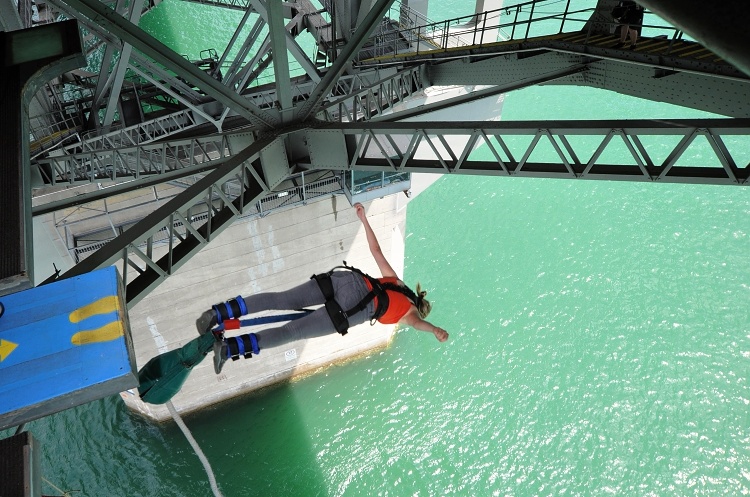
And I JUMPED!
I just leaned forward, and gravity did the work for me.
The horror of the last few seconds before the jump suddenly changed into pure joy when I started falling.
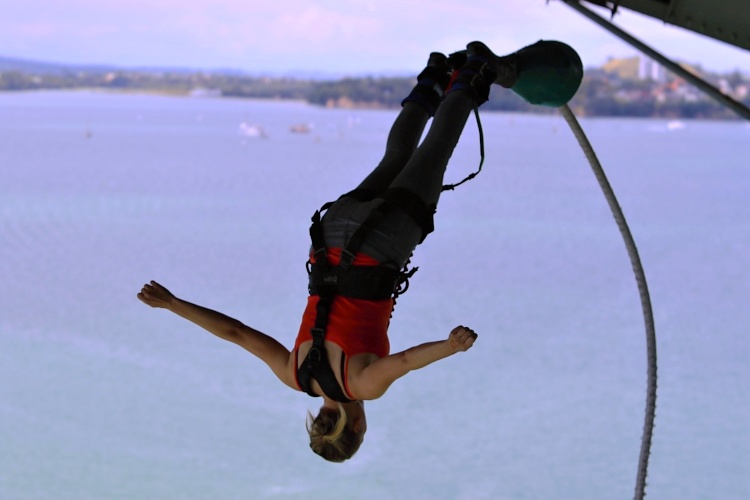
I was enjoying the moment and smiling until I hit the water.
It didn’t hurt at all, and I got into it smoothly.
I dived up to my waist, which I didn’t expect.
I had my mouth open and tasted the salty water.
In the end, this was the best part of the experience.
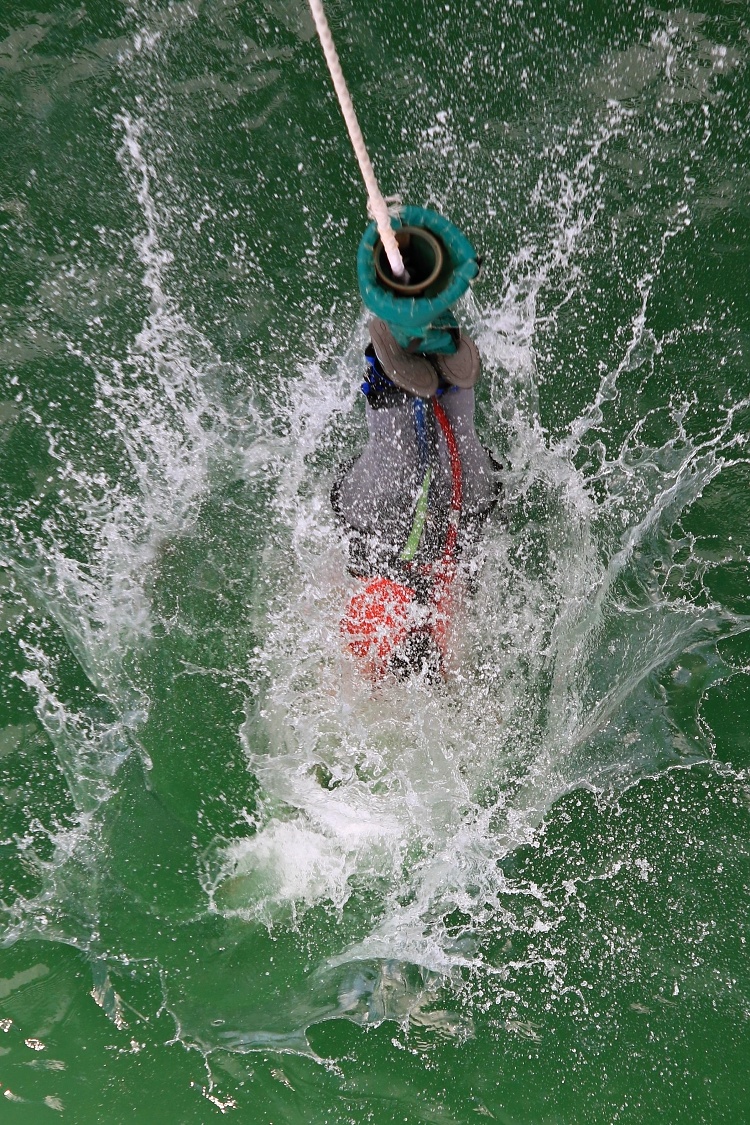
I couldn’t believe that it was over and I MADE IT! I came back up shaking but happy.
This time I enjoyed the views on the way back to the mainland.
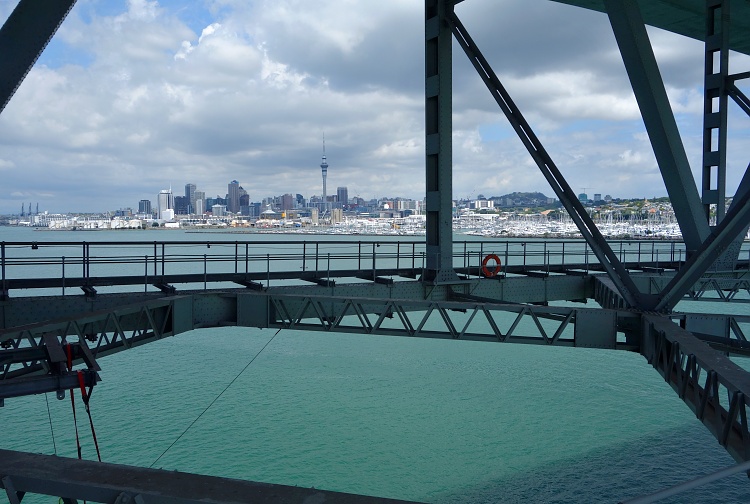
FINAL THOUGHTS
Bunge jumping was the hardest thing I have ever done (so far).
I had never felt so much fear before.
But at that moment, when I was jumping on my own, I realised one crucial thing that has profoundly affected my life.
I realised that I could really do ANYTHING I wanted.
It might be scary, hard or seem impossible.
But if I really want it, I can find the way by taking small steps forward.
And if I can do it, you can do it too (whatever it is).
PS: When we return to Las Vegas one day, I will jump off the Stratosphere Tower…. I know I can do it now…
For more information and details : https://travelfromsquareone.com/first-time-bungee-jumping/

